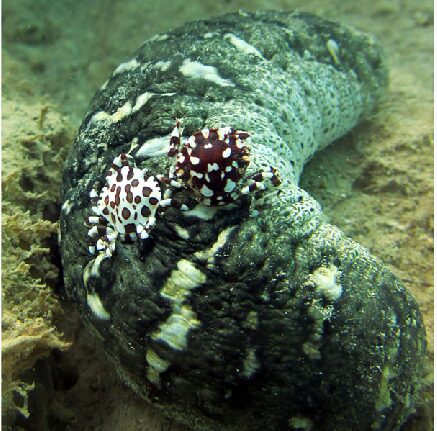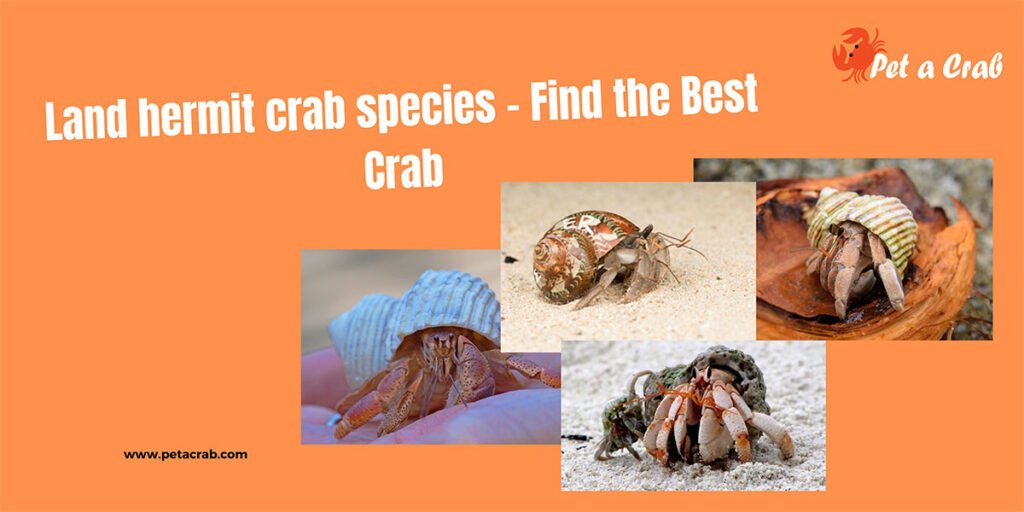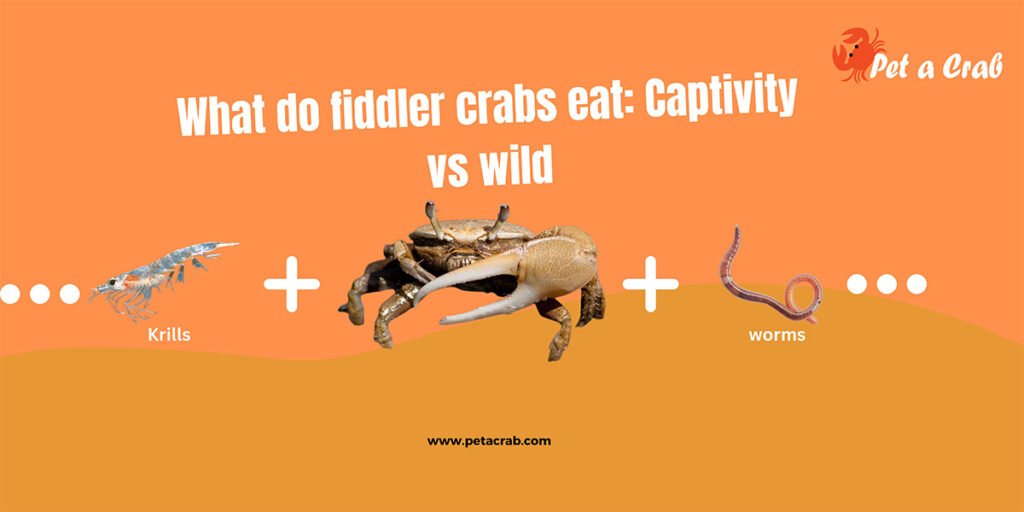The harlequin crab, a crab that spends its whole life occupying sea cucumber in the wild; can be a great and expensive pet crab in your aquarium hobby. You may face difficulties keeping this crab because of less awareness and information.

This crab is very easy to care for, just needs some extra condition to fulfill. Here we’ll talk about everything you need to know about harlequin crab.

Quick overview of Harlequin crab
| · Care Level | Easy |
| · Name | Orbicularis anemone crab, Sea cucumber crab, Harlequin crab, Commensal crab, Red spotted white crab, Harlequin swimming crab |
| · Scientific name | Lissocarcinus orbicularis |
| · Temperament | Peaceful |
| · Breeding | Difficult |
| · Size | up to 4 cm (1.6 in) with 5 mm legs and 30 mm carapace length |
| · Optimal temperature | 24-28°C (75-82°F) |
| · Diet | omnivore |
| · Sleeping nature | nocturnal |
| · Life span | 3 years |
| · Reef compatible | yes (coution) |
| · Color | Red, Dark red, White, Whitish yellow, Brown |
| · Mating | Indirect sperm transfer and courtship ritual |
Distribution and natural habitat of Sea cucumber crab
Lissocarcinus orbicularis live on the skin and in the mouths or rear openings of various sea cucumbers (holothuroids) and can be found in sublittoral, infralittoral, and subtidal zones of the ocean 2 – 100 meter depth.
A research conducted on sea cucumbers at the barrier reef of Toliara in Madagascar where researchers found, that out of seventeen sea cucumbers, eight hosted these crabs. Usually, each sea cucumber had a male and a female or an adult male but sometimes up to ten young crabs were found on a single (Thelenota ananas) sea cucumber. (1)
Lissocarcinus orbicularis found in various regions of the Indo pacific region; including India, Madagascar, Fiji, Hawaiian Islands, Australia, Japan, Sri Lanka, Tanzania, and Seychelles.

Interesting facts about Harlequin crab
- Hosts – Harlequin crab is known for its symbiotic relationship with sea cucumbers. The crab benefits from the protection and mobility provided by sea cucumber while sea cucumber remains unharmed by the presence of the crab; the crab hides inside the sea cucumber’s gut cavity or anus and near its mouth. Harlequin crabs use chemicals to select and recognize their host. Some sea cucumbers that host harlequin crabs are Actinopyga obese, Actinopyga mauritiana, Holothuria atra, Holothuria whitmaei, Stichopus chloronotus and Thelenota ananas.

- Monogamous mating – These crabs have long-term pairs and reproduce year-round.
- Appearance – Usually the females of the harlequin crabs are slightly larger than the males. The crab has red to dark red and white color, different crabs can vary slightly in shade.
- Different species – There are 9 different species found in the genus Lissocarcinus – Lissocarcinus arkati, Lissocarcinus boholensis, Lissocarcinus polybioides, Lissocarcinus ornatus, Lissocarcinus orbicularis, Lissocarcinus laevis, Lissocarcinus holothuricola, Lissocarcinus elegans and Lissocarcinus echinodisci. (2)
The name harlequin crab may refer to 3 different species – Spider decorator crab (Camposcia retusa), Rainbow crab (Cardisoma armatum), and harlequin crab (Lissocarcinus orbicularis).
Dwarf harlequin crab care
Tank setup
Tank size
If the tank is small that will not cause problems as they can adjust in a small tank like a 5 to 10-gallon tank. If you already have one, then go for that just remember they don’t like many tank mates or mates that they feel threatened by.
Substrate
Choose a sandy substrate that you feel good with some stones on the top ensuring the grains are small so the crab doesn’t face problems moving them. You can use aragonite reef sand or crushed coral sand with 2 to 3 inches depth.
Decoration
As usual, they will need plenty of rock and coral hideouts. They are great at swimming, for going from one place to another they chose flying like swimming over walking and climbing, also harlequin crabs are not good at climbing like other crabs. So don’t make strong and direct water flow where they’ll struggle to swim.
Here you can see clearly
You can add any anemones or zoanthids you want and don’t forget about the sea cucumber. There should at least be one sea cucumber to mimic their wild environment giving them a comfortable home.
Temperature and water parameters for sea cucumber crab
The temperature for harlequin crab is between 24-28°C (75-82°F) which is the typical temperature for most of the aquarium. Ensure the temperature doesn’t drop suddenly and use a thermometer to monitor the temperature.
The salinity and pH levels should be around 1.025 and 8.2. The tank mates should share the same water condition as the harlequins.
Harlequin crab feeding
They may try to eat or scrap corals if they like, that’s what their instinct is. Usually, they depend on the seaweed and algae or leftover food but you can give them a regular healthy diet with flakes and pallets.
Consider feeding them frozen food like Mysis shrimp, brine shrimp, or small pieces of fish or chicken. Feed them regularly for the first few days and observe their eating frequency and quantity, then feed them accordingly.

Tank mates of harlequin crab
Make sure the tank mates are small and peaceful and don’t compete for food and place. You can consider hermit crabs as tank cleaners or gaudy clown crabs as these crabs are the same size and have no intention of harming other invertebrates.
#Faq
Are Harlequin crabs reef safe?
Their tiny size, not larger than a shirt button, does not threaten the corals greatly. But they may scratch or eat your corals if they find them tasty.


